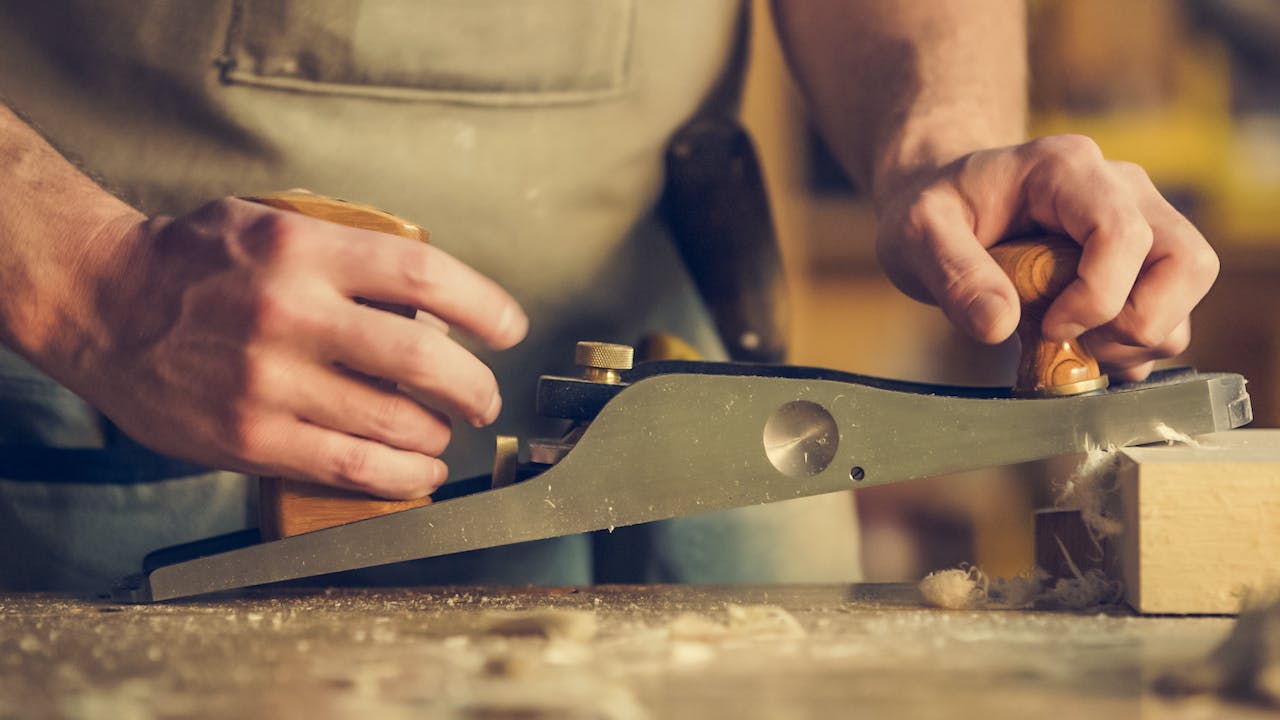New woodworking enthusiasts are often confused about which woodworking tool they should start with. The confusion mainly arises when it comes to choosing between a jointer and a planer.
In this article, we will talk about the pros and cons of these two woodworking tools. We’ll also talk about their features and explain why a jointer should be the choice as your first tool in the world of woodworking.
Importance of Power Tools in Woodworking
Jointer and planer are two of the most important power tools in woodworking. It makes life a lot easier for us when we get ready to use pieces. But remember, you might get anywhere between finely milled to rough-cut pieces; this is mainly due to the fact that millers don’t know the end result of your woodworking project.
Power tools are quite expensive, but they help you to resize the pieces. In this way, you can ensure you get the pieces that are suited for your woodworking project. In the long run, though, we’d suggest you get both the tools- jointer and planer, which isn’t possible for every beginner out there. Meanwhile, click here to read some useful jointer reviews.
Jointer
If you’ve been buying lumber pieces, you’ll know that not all of them come in suitable shapes. Some are twisted while others are crooked, so you need to work on them. You can order pieces that are prepared for your project, but it’ll definitely cost you extra money. You won’t want to spend like that every time you order lumber pieces!
In order to give the lumber piece the suitable edge and face, consider purchasing a jointer.
A jointer basically consists of two tables fixed on the same plane- infeed and outfeed. Between those two tables, you’ll have a cutter head. The cutter head consists of several small knives that do the job.
The configuration consists of the knife tops in line with the outfeed table. The infeed table is adjusted to such a depth, which is the same as the amount of wood that is to be removed. As you pass the lumber board, the excessive wood will be removed to make the surface of the piece flat. The main job of the outfeed table is to support the piece that has been cut.
An adjustable fence acts as a guide and support for the lumber piece in the whole process. The jointer helps in turning the lumber piece flat and straight. It makes the edges 90 degrees to one another. So, you can see why the jointer is so important.
Advantages
-
The jointer is the tool to go for when it comes to making the edges flat. For any woodworking project, you’ll need square, flat edges. And no tool does it better than a jointer.
-
The fence of the jointer, as mentioned before, is adjustable. You can adjust it to work at different angles like 45 and 90 degrees. This is greatly useful when you want to mold the pieces.
-
The jointer is a very handy tool when it comes to straightening the pieces or boards.
Disadvantages
-
Remember that there will be rough edges and sides even after you’ve used the jointer. This is one of the main cons of using a jointer.
-
When it comes to producing two parallel faces, you can’t rely on the jointer. You can get a flat face and square edge on both sides of the piece, but they won’t be parallel.
Planer
Planer excels at making the edge and face of the lumber pieces parallel. It also adjusts the thickness of the piece to the right dimensions.
The configuration of the planer consists of two rollers with a cutter head in between. The infeed roller grabs the piece and guides it towards the cutter head. The outfeed roller then gets a hold of the piece and takes it out of the machine.
The distance between the table and the cutter head are the two things that decide the thickness of the lumber piece. But planers have a limit, so you’ll need to pass the lumber piece multiple times to get the required thickness.
Advantages
-
For any woodworking project, having parallel surfaces is vital for any lumber piece. Planer is the best tool for this purpose.
-
Planer excels in making rough wood pieces clean, parallel, and flat. But keep in mind, in this case, the wood needs to be straight.
-
You can get the desired thickness by using a planer. Though it’ll take multiple passes, it’ll get the job done.
Disadvantages
-
The first main con of using the planer is its tendency to duplicate defects of the board- dips, lumps, etc. In this case, you should always use the jointer first. This’ll make the boards straight and flat. Then you can use the planer.
-
As stated before, the planer requires you to make multiple passes due to its limit of removing a certain amount of board thickness. This is different from a jointer where you mostly need to pass the wood once. So you’ll need to spend more time on a planer when working on a project.
The Verdict
You can clearly see that the jointer does the primary work of making the board flat and straight. Without having these qualities, it’ll be risky to use a planer or any other tool on the piece.
It’s also quite irritating to work with a lumber piece that doesn’t have perpendicular edges and is not straight. A jointer makes sure you take care of these issues in the very first step.
Therefore, a jointer is like the base of your woodworking adventure. If you don’t have the base, you have nothing to build upon.
Just make sure to set up your tools, which will take time. Be patient with your machinery. As you get more experienced, slowly add to your collection of tools. It’s best to gain the skills one tool at a time.

